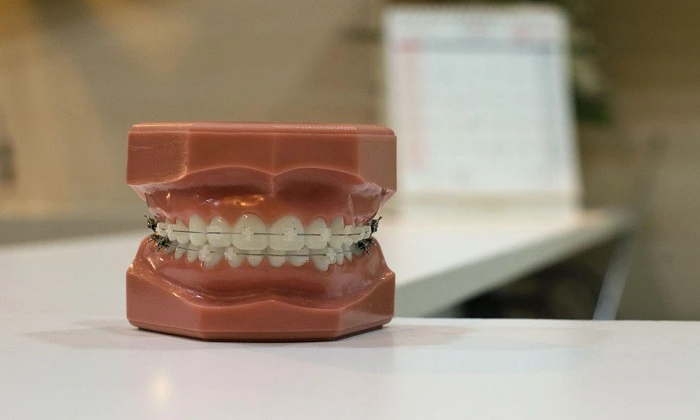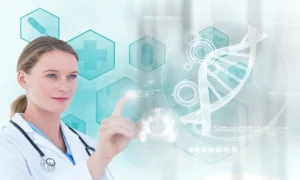For a long time, visiting the dentist might cause anxiety. People came to connect the dentist’s office with agony and misery as a result of the first foot-powered dental drill, enormous needles, and dismal outcomes. However, just as things have evolved, so have dental procedures.
The industry was motivated to look for ways to lessen discomfort, give better (and quicker) results, and provide an all-around good experience by the common mistrust and terror of dentists. Today, visiting the dentist shouldn’t be a terrifying experience. Your experiences at the dentist will never be the same thanks to modern technologies and in this article, we’ll talk about it in greater detail.
Personalized method
Dentists are employing more advanced tools and technology before you ever sit in the chair to provide you a better experience. It’s obvious that efficiency and relaxation are primary priorities. Processes and facilities that provide a more individualized experience are prioritized in the top dental practices.
Convenient features
Dental clinics are no longer a scary place to be. They are made with a focus on contemporary technology that encourages comfort and relaxation. As an illustration, prevalent in many dentist offices today are:
- Exam chairs with integrated massage mechanisms
- Headphones that block out noise
- Tablets and televisions
- Hot blanket
LED headlights
Most people don’t give their dental team’s attire much thought, but if you do, you could notice that they are sporting a set of dental loupes, or spectacles with magnifying capabilities, together with an LED headlight.
With the use of this technology, your dentist and dental hygienist may more easily view enlarged areas without having to shine a bright light directly into your eyes, which may seem a bit strange.
Intraoral cams
Dental technology is becoming quicker, better, and more accurate, and intraoral cameras are a fantastic illustration of this. These little digital cameras, which resemble long pens, provide you and your dentist with a much more in-depth image of what is occurring within your mouth than was previously considered to be feasible. This camera provides live video and photos of your tooth surfaces, gum health, and other features like microscopic cavities that are difficult to notice with the naked eye.
3D modeling
The days of unpleasant and uneasy first impressions are long gone. Make an imprint for a crown or bridge without biting into goopy, slimy, or bitter material. The advent of 3D imaging altered everything. The technology captures hundreds of high-definition photographs in a matter of seconds using 3D imaging. The program then joins these pictures to produce a three-dimensional model of your mouth.
In addition to improving your comfort, technology aids in issue prevention and helps your dentist make more precise diagnoses. For instance:
- Determining the best course of action to take in order to treat TMJ pain
- Better detection of sleep apnea
- Better accuracy while placing dental implants, bridges, and crowns
- Disclosure of bone cancer
- Finding little fissures and fractures in teeth that might otherwise be invisible
Materials that are biocompatible and look natural
The ability to build long-lasting restorations that match the color of your original teeth, remove less tooth structure, and guarantee your overall health is made possible by new technology in dental materials. For many years, dentists repaired teeth with cavities using mercury amalgam (silver-colored) fillings.
Even though composite fillings are now a superior, more appealing alternative to silver fillings, silver fillings are still widely utilized today. This biocompatible material is long-lasting, mercury-free, and resembles your natural teeth in appearance.
Optional sedatives
The days of having to “grin and bear it” through a painful dental procedure are gone. Modern pain treatment methods are offered in dental offices nowadays.
The three most typical methods of contemporary dentistry sedation are, in addition to Novocaine (which is frequently used to numb a specific area of the mouth):
- Oral conscious sedation- A sedative that is taken orally and induces a peaceful, dreamlike state. Oral sedation might result in some patients dozing off or completely forgetting the operation.
- Nitrous oxide- Sometimes referred to as laughing gas, induces a relaxed and happy feeling when breathed through a tiny face mask.
- IV sedation- During the procedure, a constant stream of intravenous drugs will make you feel sleepy and at ease. This kind of sedation is excellent for people who desire a deeper level of relaxation without having to deal with general anesthesia’s possible adverse effects.
Laser dental care
One of the most effective and adaptable dental treatments now accessible is laser therapy. They are not only less intrusive and a great deal more pleasant, but they also provide more effective treatment alternatives for major tooth health conditions. Better results and a faster recovery are the results for you!
The effectiveness of laser dentistry may be shown in the treatment of gum disease. When treating gum disease in the past, a knife was always used to remove the affected tissue. This not only led to considerable discomfort and protracted healing times, but it frequently also caused damage to at least some good tissue. Your dentist can use lasers to target unhealthy tissue while avoiding harming good tissue. Since this therapy encourages blood flow, there is practically no pain, which leads to quicker recovery.
Taking care of your teeth is extremely important so if you’re looking for an innovative dentist in Scottsdale, who are focused on offering great service we highly recommend Tatum Point Dentistry.







